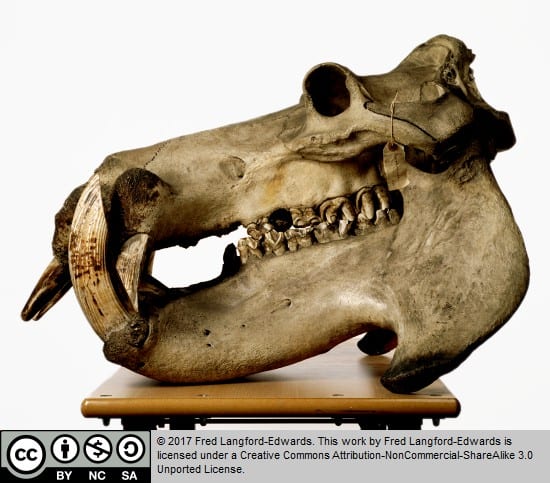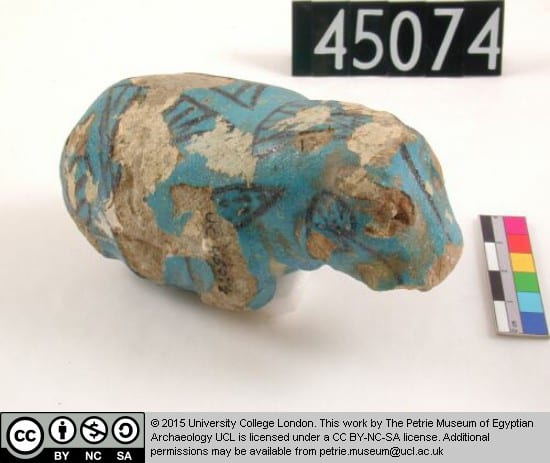The Plagues of Egypt
By Hannah B Page, on 23 October 2018
For my blog post this week I am starting a new series based loosely on the Plagues of Egypt. The idea came to me while I was working in the Grant Museum and was thinking about possible connections between the Grant and the Petrie Museum of Egyptian Archaeology. For some reason as I was stood next to the insect cabinet, the plague of locusts was the first thing that came to mind.. and conveniently, I have already written a blog post about the 2nd plague of frogs. Before I launch in I must note briefly that I don’t particularly wish to talk about religion or religious texts. Instead I will use the 10 plagues to discuss some (hopefully) interesting zoological and sociocultural phenomena that link the two museums.
So, what are the 10 Plagues of Egypt?
- Water turning into blood
- Frogs
- Lice
- Wild animals
- Diseased livestock
- Boils
- Thunderstorms of hail and fire
- Locusts
- Darkness for three days
- Death of the firstborn
The first plague of water turning into blood is an interesting one to start with, but the topic of the two liquids is very pertinent to both collections. Water has an incredibly important role in the ideological and cultural landscape of ancient Egypt. The waters of the Nile were the lifeblood of ancient Egyptian society. It provided vital irrigation for farming, transport through the kingdom, and was linked closely with ideology and religion in Egypt. The Greek Herodotus is recorded as calling Egypt the “gift of the Nile”, implying that Egypt itself was born from the river—this further develops an idea I have discussed in a previous blog post: that the Nile is deeply connected with fertility. With this in mind it is not difficult to see how devastating the idea of water turning into blood would be for Egyptian society.
One papyrus from the twelfth dynasty (c.1991-1803 BCE) interestingly states that the “river is blood“, which has caused some debate over the occurrence of the plagues in Egyptian history. However, the most probable explanation is that during the harsh flooding of the Nile the disturbed red river silt would create this phenomena.

Fig 1: Water ripple hieroglyph (n) (Petrie Museum Catalogue no. UC2145)
Blood as well as water was also symbolically significant to the Ancient Egyptians. Wine was given as “blood of the Gods” during certain religious offerings, something akin to the Christian symbolism of using wine as the blood of Christ, and the deity Shesmu is also linked with blood, being the lord of wine and the “great slaughterer of the gods”.
It is also not difficult to connect the Grant Museum with water and blood as they are both vital components to many living creatures on earth. For this post I wish to focus in on one of my favourite water dwellers in the museum and one that has a deep connection with ancient Egypt. This mammal can certainly displace a lot of water and coincidently produces a fluid over its skin that is often called blood sweat. The hippopotamus, known as a “river horse” by the ancient Greeks secretes a substance called hipposudoric acid. The liquid is red, which gives it its colloquial name, but it is neither sweat nor blood. In fact the secretion is an example of an evolutionary masterpiece—a natural sunscreen! This fluid is very much needed due to their skin being exposed in blistering high UV environments (and being a redhead who works in sub-Saharan Africa- I can fully appreciate this)! As well as the blood sweat creating UV protection it is also a very good antiseptic, which is useful as hippos can be extremely aggressive animals.

Fig 2. Hippo skull in the Grant Museum of Zoology (Catalogue no. Z32)
Sadly, the hippo is no longer found in Egypt but in dynastic times it was a hazard to boat travellers along the Nile and was present in ideological and cultural symbolism. The deity Taweret was often depicted in the form of a pregnant hippo as she represented fertility (like frogs!). Hippo figurines are also found on ancient Egyptian sites (Fig 3) and hippo tusk ivory was used to make pendants, amulets and sculptural pieces.

Fig 3. Blue glazed faience hippopotamus (Petrie Museum Catalogue No. UC45074)
As you can see, water and blood were and still are incredibly important cultural symbols, most probably due to their inescapable connection to the natural world and to life and death. It really is no wonder that that these themes come up time and time again all over the world.
I hope you have enjoyed my first foray into the Plagues of Egypt as much as I have… I’m quite excited about what direction they might take my research in next!
 Close
Close

